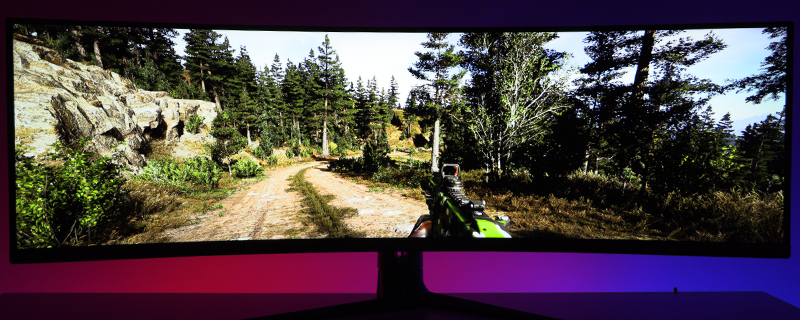AMD Freesync 2 HDR Preview
Wrap Up
We’ve got three different things to wrap up here, of varying ease.
Let’s start with AMD’s Freesync 2. V Sync is the manner in which a game only updates the image in conjunction with the refresh rate of your monitor so that ever image is fully in place before being displayed. This has the massive benefit of removing any screen tearing as anyone who has disabled V Sync will be able to attest. The negative to this is the very fact that it’s tied into your refresh rate. That means that with V Sync enabled if your performance drops from 60 FPS to 59 FPS it actually drops to 30 FPS to ensure that it can remain synchronised with your refresh rate. Naturally this chopping and changing of the frame rate is a royal pain in the bum. Freesync, like Nvidia’s G-Sync, removes that limitation so that you can have any frame rate at all and have it not involve screen tearing. Where AMD has really taken the ball and run with it is the affordability of their version of this idea. Nvidia’s G-Sync is expensive to implement and only included on a handful of displays. AMD’s Freesync though barely increases the price of the display and has huge support across a whole range of panels. It’s very good indeed.
HDR is the next step on in the quest for image quality. Even mid-range graphics cards are capable of busting 60 FPS in games, indeed most of them can break the 100 FPS mark in the more popular resolutions. Rather than take any performance improvements and use them just to make your game run at an even higher frame rate until it’s pointless, AMD are leveraging this performance to bring much more eye candy to the party. Although HDR might look okay in the pictures we’ve shown you today you really need to see it with your own eyes to really appreciate how much better your images look. Colours are more richly saturated, highlights are brighter without being clipped, and shadows, oh my goodness the shadows, are deep and lustrous whilst also managing to bring out the detail within the darkness. It’s the best of every world. Naturally gaming support is still in its infancy, but to give you a quick example of how fast it’s being adopted here are a few of the big games that have HDR support right now (others are available) : Anthem, Assassin’s Creed, Battlefield 1 and V, Black Ops IIII, Destiny 2, Divinity Original Sin 2, F1 2018, Far Cry 5, Final Fantasy XV, Forza Horizon 4, Forza Motorsport 7, Hitman 2, Madden 19, Nex Machina, Ni No Kuni II, Redout, Resident Evil 2 and 7, Shadow of the Tomb Raider and The Division 2. As we say, a quick search will bring you a list of every title but there are some big names in there with most of them supporting them in a big way and bringing huge benefits to the party.
Lastly the monitor that we’ve been using throughout today’s look at Freesync 2 HDR, the ASUS ROG Strix XG49VQ. It’s absolutely massive. Seriously big. 49 inches wide in fact. But for many people who are already running a couple of screens then it takes up little more real estate than they do, but without the annoying thick bit of bezel between the two displays. Furthermore you can tie it all together as one 3840×1080 display, or split it into lots of various screens that each count as their own thing. The ability to do this simply, with hotkeys, is something for which ASUS need a lot of credit. We’ve seen ultra-wide displays before but never ones that are so user friendly. With 144Hz support alongside Freesync 2 HDR it has most the big boxes ticked, and perhaps most impressively comes in at a seriously reasonable price point. Yes it might seem a lot at a glance, but considering the cost of two 27″ 1080P Freesync 2 HDR IPS 144Hz monitors will easily reach that, but this does it on a single stand with a single cable and no bezel in the middle it actually ends up being a bargain. Sure there is the Samsung version that is HDR600 rather than HDR400 but its a whole £300 more expensive. Yes thats right the Asus is £999 and the Samsung is (quoted from their own website) £1299.
The buzz in the press might be all about virtual reality because it seems like sci-fi come to reality, but in daily use we think the benefits of the lack of screen tearing from Freesync 2 coupled to the gorgeous image quality available with HDR is the real future of gaming. But it’s here right now, and usable, and supported on some popular titles. What’s not to like?
Discuss AMD Freesync 2 HDR and the ASUS ROG Strix XG49VQ on the OC3D Forums.Â




